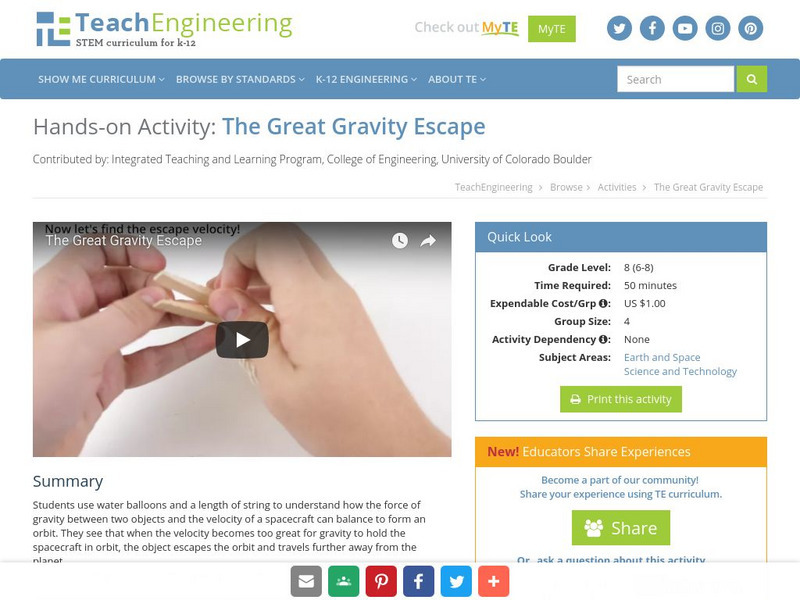Hi, what do you want to do?
Curated OER
Mars Calendar Project
Students design a calendar that displays time on Mars. They explore the differences between time on Earth and time on Mars while making the calendar.
Curated OER
Jupiter's "Monstrous" Magnetosphere
Students explore Jupiter's magnetosphere. In this Jupiter lesson plan, students examine a diagram of the magnetic field that surrounds Jupiter.
Curated OER
Book Report Haiku
Students study another method for writing a book report using a Haiku poem. In this book report instructional activity, students use the Haiku poem format to write a book report.
Curated OER
Celestial Photography
Students practice photographic skills and gain an awareness of photography as a scientific tool.
Curated OER
Astronomy Teamwork
Pupils work together in groups to complete an astronomy project. In the classroom, they find real objects to represent various objects in the solar system. After going outside, they practice using a distance scale and use their objects...
Curated OER
Polar Caps: Image Processing Tutorial
High schoolers utilize computer image processing techniques to measure the size of Earth's polar ice caps and analyze various phenomena visible on planetary images.
Curated OER
Rock Families
Students study the three types of rock characteristics; igneous, sedimentary, and metamorphic. They are divided into three groups and each group takes one of the rock characteristics. They then act out the characteristics of their rock...
Curated OER
Investigating daylight
students investigate a natural factor affecting their everyday lives: daylight. First, they collect data on sunrise and sunset in their hometown, create a Microsoft Office Excel chart to help them understand the data pattern, and offer a...
Curated OER
Watershed Management
Students investigate the concept of a watershed. They conduct research into the concept using a variety of resources. Students take a field trip to a local watershed to make observations. The outcome is a report concerning the outside...
Curated OER
Physical Science Project-Atom
Fifth graders investigate atoms. For this atom lesson, 5th graders investigate the parts of an atom. Students explore atom numbers and determine the number of electrons is in each atom.
Curated OER
Kepler's Third Law
Learners use Kepler's third law to derive the velocity in a circular orbit of any radius, and identify the Earth escape velocity.
Curated OER
Astronomical Scales
Students describe the different units of measurement. In this space science activity, students calculate astronomical distances using a scale. They explain the significance of using scientific notation in expressing very small or...
Curated OER
Third Grade Language Practice
In this grade 3 language practice worksheet, 3rd graders complete a total of 24 multiple choice questions based on a variety of grade 3 language concepts. An answer key is included.
TeachEngineering
Teach Engineering: Mercury and Venus
Students explore Mercury and Venus, the first and second planets nearest the Sun. They learn about the planets' characteristics, including their differences from Earth. Students also learn how engineers are involved in the study of...
TeachEngineering
Teach Engineering: The Great Gravity Escape
Students use water balloons and a length of string to understand how gravity and the velocity of a spacecraft balance to form an orbit. They see that when the velocity becomes too great for gravity to hold onto an object, the object...
South Carolina Educational Television
Know It All: Solar System Simulation
Fourth graders will begin to understand the solar system by using and creating models to demonstrate the layout of the solar System.
TeachEngineering
Teach Engineering: Blazing Gas
Learners are introduced to our Sun as they explore its composition, what is happening inside it, its relationship to our planet (our energy source), and the ways engineers help us learn about it.





















